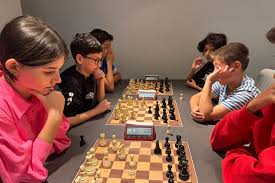How Sports Players Prepare for International Tournaments

Competing in international tournaments is the pinnacle of an athlete’s career — the moment when skill, discipline, and determination converge on the world stage. But the road to representing one’s nation is not a simple one. It requires months, even years, of preparation, both physically and mentally. Behind every breathtaking performance lies an intense process of training, planning, and personal sacrifice. Whether it’s football, basketball, or athletics, the preparation routine shares similar foundations. Sports fans who follow major tournaments on lương sơn tv often see the glory, but few realize the enormous effort that goes into getting there.
Physical Conditioning and Rigorous Training Schedules
Athletes must reach peak physical condition before competing internationally. Physical readiness isn’t achieved overnight — it’s the result of carefully structured workouts and recovery routines that strengthen every part of the body.
- Endurance Training: Long-distance runs, swimming, and cycling sessions help players maintain stamina for prolonged matches.
- Strength Building: Weight training and resistance exercises develop muscle power, essential for explosive movements and balance.
- Speed and Agility: Drills that improve quick directional changes, acceleration, and reaction times are critical for most sports.
- Injury Prevention: Stretching, physiotherapy, and low-impact activities are integrated to keep the body resilient.
By combining these elements, players ensure that they can endure the intense pace and pressure of international play without losing form or energy.
Nutrition and Hydration Strategies for Peak Performance
Diet plays a vital role in athletic preparation. Professional players work closely with nutritionists to create customized meal plans designed to enhance performance, maintain optimal weight, and prevent fatigue.
- Balanced Macronutrients: Athletes consume the right ratio of proteins, carbohydrates, and fats to fuel training and recovery.
- Pre-Game Meals: Easily digestible carbohydrates and lean proteins are prioritized before competitions for sustained energy.
- Hydration Focus: Electrolyte-rich fluids replace lost minerals during training and matches.
- Supplements and Recovery Drinks: Carefully selected supplements such as BCAAs and vitamins help accelerate muscle repair.
Nutrition isn’t just about eating well; it’s a science that supports every sprint, jump, and tackle during a tournament.
Mental Preparation and Psychological Resilience
International tournaments bring enormous pressure. Athletes must not only compete with top players but also cope with national expectations and media scrutiny. Mental preparation, therefore, becomes just as important as physical training.
- Visualization Techniques: Players mentally rehearse scenarios, from penalty kicks to game-winning shots, to build confidence.
- Mindfulness and Meditation: These practices improve concentration and calm under stress.
- Goal Setting: Breaking down large objectives into smaller, achievable targets helps athletes track progress.
- Professional Support: Sports psychologists guide players in managing anxiety, staying motivated, and maintaining focus.
By mastering their minds, athletes gain the composure needed to perform at their best when it matters most.
Tactical Understanding and Team Coordination
Success at the international level requires more than individual brilliance — it demands unity and understanding. Teams spend countless hours refining tactics, formations, and communication.
- Game Analysis: Coaches study past matches and opponents’ weaknesses to adjust strategies.
- Team Drills: Players repeatedly practice set pieces, defensive positioning, and transition plays.
- Communication Skills: Building trust and understanding among teammates ensures seamless coordination.
- Role Clarity: Every player understands their specific function and responsibilities within the game plan.
When executed properly, this tactical harmony can be the difference between early elimination and championship glory.
Adapting to Different Climates and Environments
International competitions often take players far from home, where weather conditions, altitude, and time zones can drastically affect performance. Athletes must adapt quickly to maintain consistency.
- Climate Acclimatization: Teams arrive early to adjust to local temperatures and humidity.
- Sleep Schedule Adjustments: Jet lag management is crucial, especially when tournaments are held across continents.
- Altitude Training: Some athletes train at high elevations to increase red blood cell count and endurance.
- Equipment Adjustments: Footwear and clothing are chosen to suit the playing surface and climate.
Adaptability ensures that players remain comfortable and ready to compete under any conditions, no matter where the tournament takes place.
Media Relations and Fan Engagement Preparation
In the modern era, athletes are not just competitors — they are public figures. How they interact with fans and handle the media can influence their image and even team morale. During international tournaments, fan interaction becomes particularly intense.
- Press Conferences and Interviews: Players are trained to handle media questions with professionalism and composure.
- Social Media Presence: Maintaining a positive and engaging online persona helps connect with supporters worldwide.
- Public Expectations Management: Athletes learn how to deal with criticism and praise gracefully.
- Live Broadcast Awareness: Fans watching trực tiếp bóng đá expect authentic emotions, but also respectful conduct during high-pressure moments.
Balancing fame, performance, and fan expectations is a skill that top athletes develop alongside their technical and physical training.
Rest, Recovery, and Injury Management
After grueling matches and intense training sessions, recovery becomes essential. Without proper rest, even the most talented players risk burnout and injuries that could sideline them before crucial games.
- Sleep Optimization: Athletes prioritize 7–9 hours of quality sleep for muscle repair and mental clarity.
- Massage Therapy and Ice Baths: These help reduce soreness and inflammation after intense physical exertion.
- Rehabilitation Programs: Players recovering from injuries follow strict, supervised routines to regain full strength safely.
- Active Recovery Days: Light stretching, swimming, or yoga promote circulation and flexibility.
A well-rested body recovers faster, reacts better, and maintains consistency throughout the demanding tournament schedule.
Broader Reflections on How Preparation Defines International Success
In conclusion, the journey to international tournaments is one of immense dedication, precision, and perseverance. From early morning workouts to strategic team meetings, every step is carefully planned to bring out the best in each player. The commitment to excellence goes far beyond talent — it’s about discipline, sacrifice, and resilience. Athletes train their bodies, sharpen their minds, and adapt to new challenges, all in pursuit of that defining moment on the global stage.
When the whistle blows and the world watches, fans see the culmination of years of preparation and unseen effort. The players’ calm under pressure, perfect coordination, and sheer athleticism reflect not luck, but relentless hard work. Every sprint, pass, and victory is born from the countless hours spent preparing behind the scenes. That’s what truly makes international tournaments a celebration not just of sport, but of human potential and dedication.



